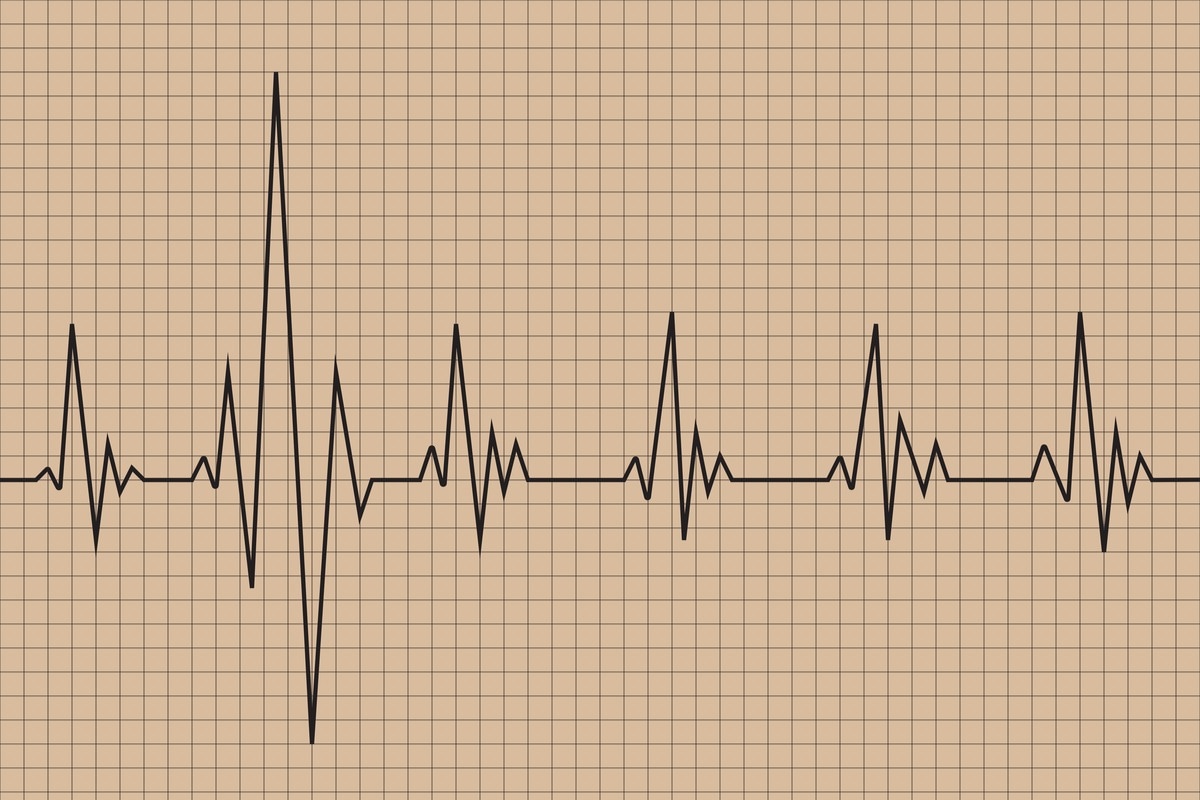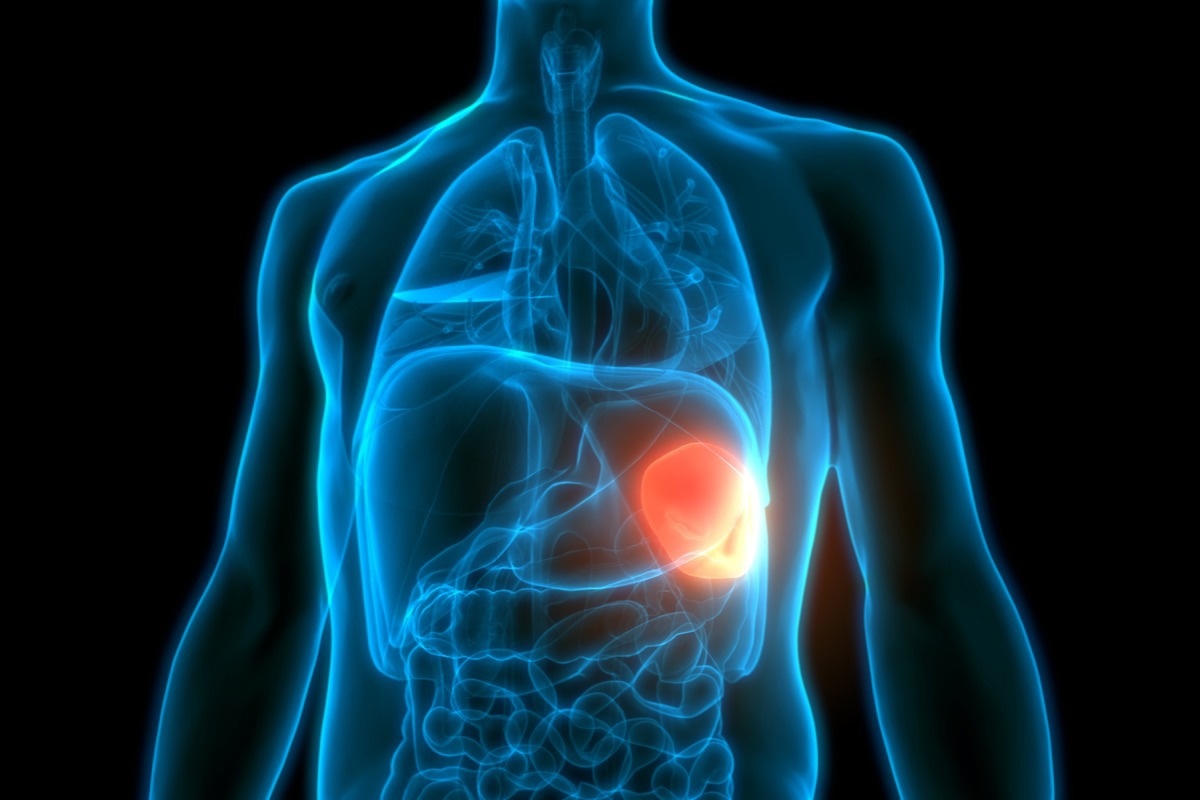Introduction
History
Cause and symptoms
Epidemiology
Case reports
Diagnosis and treatment
References
Further reading
Ivemark syndrome (IS) is a very rare embryological condition affecting multiple organs of the body. It is also known as right atrial isomerism. The exact cause of Ivemark syndrome has not yet been discovered. It is frequently linked to cardiac and other organ problems, which are the most common causes of mortality in newborns.
Splenic asplenia or hypoplasia, cardiac abnormalities, and an irregular arrangement of the internal viscera of the chest and abdomen are common symptoms of this condition. Symptoms vary widely based on the precise abnormalities that have been discovered. Ivemark syndrome is a heterotaxy condition that has no known cure.
 Cardiac abnormalities are often present in Ivemark Syndrome. Image Credit: Praiwun Thungsarn/Shutterstock
Cardiac abnormalities are often present in Ivemark Syndrome. Image Credit: Praiwun Thungsarn/Shutterstock
History
In 1955, Ivemark issued a four-part report on his research on the relationship between atrioventricular and conotruncal abnormalities. He pointed out that the spleen is generated during embryogenesis while the heart is still in a vital modeling stage. Ivemark identified the pathophysiology of splenic agenesis syndrome in 1955, reporting 14 new cases with autopsy and 55 examples from literature. He also cited six examples from literature, as well as four new cases of numerous or rudimentary spleens associated with cardiovascular abnormalities. In 1973, Simpson and Zellweger outlined the numerous characteristics of Ivemark syndrome.
Cause and symptoms
Ivemark syndrome's exact cause is unknown. The majority of cases are spontaneous, and no causative gene alterations have been discovered yet.
The lack or underdevelopment of the spleen, cardiac deformities, and an irregular arrangement of the internal viscera of the chest and abdomen are some common symptoms of this condition. Depending on the precise abnormalities present, the symptoms of Ivemark syndrome can vary substantially.
Many newborns experience symptoms such as bluish staining of the skin, heart murmurs, and evidence of congestive heart failure, which are all linked to cardiac abnormalities. Very rarely, patients with this syndrome can also experience inguinal hernia, tetralogy of Fallot, transposition of the great arteries, and situs inversus totalis.
Epidemiology
The condition affects 1/10,000–1/40,000 live births, according to estimates. 1–3% of all congenital cardiac defects are caused by Ivemark syndrome. It is known to affect around 1 in 6000 deliveries.

 Read Next: Causes and Symptoms of Interrupted Aortic Arch
Read Next: Causes and Symptoms of Interrupted Aortic Arch
Case reports
One case report observed right isomerism in a one-and-a-half-month-old female infant. The report was of a 45-day-old female child born of non-consanguineous marriage by emergency cesarean section due to fetal distress, with two older normal female siblings aged 6 and 4 years. She was admitted to the hospital with a 14-day history of fever, cough, and cold. She was also suffering from 7-days of dyspnea, bluish skin discoloration, feeding difficulties, and irritability.
The infant was cyanosed on examination, with a heart rate of 175 and a respiratory rate of 74 beats per minute, respectively. Consolidation of the right middle and lower lobes was seen on a chest X-ray, as well as the collapse of the right middle and lower lobes. Uncertain situs, levocardia, and an imbalanced atrioventricular (AV) canal were found on echocardiography.
A CT angiography revealed infra diaphragmatic TAPVC with four pulmonary veins draining into the inferior vena cava (IVC) through a three-centimeter vertical vein. There was also a report of a Bochdalek hernia. During her stay in the hospital, the patient experienced severe cyanotic spells that were only partially controlled, as well as one episode of seizures that were managed with medicine. An ill-defined hypodensity in the right cerebral hemisphere was discovered during a CT scan of the brain. When the parents learned of their child's heart condition, high surgical mortality, and prognosis, they declined further treatment, refused to undergo chromosomal testing, and left against medical advice.
In 2021, Dr Ramamoorthi discovered this unusual condition in an 8-year-old female child who had had cyanosis since she was three months old but had been asymptomatic until she was seven years old. At the age of seven and a half years, the child exhibited increased cyanosis, easy fatigability, and squatting episodes, necessitating a rework. The absence of a spleen was confirmed by a complete hematological examination, however, neutrophilic functions and humoral immunity were found to be normal. Until the age of two months, the child appeared to be in good health. The mother noted bluish discoloration of the oral mucosa, hands, and soles at three months of age, which was increased by crying.
Her workup revealed mesocardia, a normal cardiothoracic ratio, and dextroposed heart ECG results. The ECHO findings revealed various heart anomalies, including pulmonary stenosis. The absence of a spleen was discovered on the USG of the abdomen, both in the traditional location and elsewhere. Asplenia was confirmed by a peripheral smear that revealed Howell-Jolly bodies. The liver was positioned in the middle of the body.
At the age of eight, the child was diagnosed with worsening cyanosis and squatting episodes and underwent a palliative Kawashima surgery, which was the sole treatment choice. With oxygen, hydration control, and treatment for an upper respiratory infection, the child was stabilized. Cyanosis improved after surgery and was nearly non-existent. By two months, fatigue and dyspnea had improved, tissue oxygenation and perfusion had improved, and central cyanosis had practically vanished. During the follow-up period, the child gained weight steadily and had a higher quality of life. She is doing well following surgery.
 The lack or underdevelopment of the spleen is also a hallmark symptom of Ivemark Syndrome. Image Credit: Magic mine/Shutterstock
The lack or underdevelopment of the spleen is also a hallmark symptom of Ivemark Syndrome. Image Credit: Magic mine/Shutterstock
Diagnosis and treatment
Clinical signs and symptoms are used to make a diagnosis. When necessary, surgical repair of cardiac abnormalities may be used for treatment. Prophylactic antibiotic medication can be used to limit the risk of infection caused by the spleen's absence or poor function. Other treatment procedures are specifically based on the symptoms exhibited by the patient.
Further research is required for the development of therapeutic approaches against this rare congenital syndrome. A genetic investigation may also aid in a better understanding of the condition.
References
- Ramamoorthi, L. M. (2021). A rare case of complex cyanotic heart disease-Ivemark Syndrome. University Journal of Medicine and Medical Specialities, 7(1).
- Patel, P. H., Hayden, J., & Richardson, R. (2017). Ivemark syndrome: bronchial compression from anomalous pulmonary venous anatomy. Journal of surgical case reports, 2017(3), rjx045. https://doi.org/10.1093/jscr/rjx045
- Jain, D., Chavan, B., & Manoj, A. (2018). Syndrome of right isomerism: Ivemark syndrome. Journal of Mahatma Gandhi Institute of Medical Sciences, 23(2), 92. Available at: https://www.jmgims.co.in/text.asp?2018/23/2/92/243129
- Ivemark syndrome. [Online] NIH-GARD. Available at: https://rarediseases.info.nih.gov/diseases/6795/ivemark-syndrome
- RIGHT ATRIAL ISOMERISM; RAI. [Online] OMIM. Available at: https://www.omim.org/entry/208530
- Chen H. (2016) Ivemark Syndrome. In: Atlas of Genetic Diagnosis and Counseling. Springer, New York, NY. https://doi.org/10.1007/978-1-4614-6430-3_135-2
Further Reading